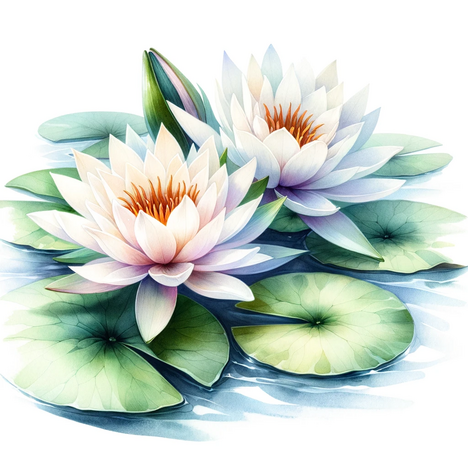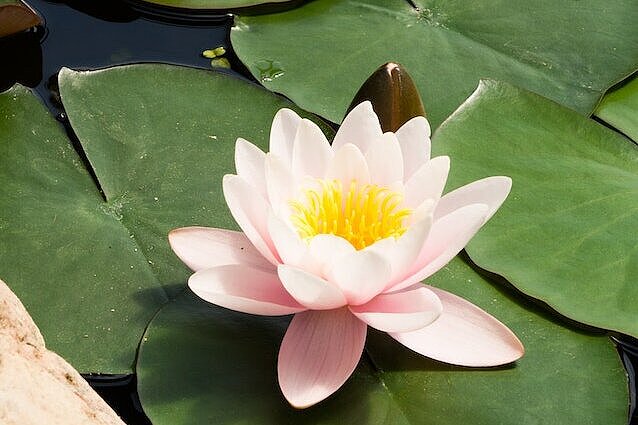Water lily family

What are water lilies?
Water lilies, also known as Nymphaeaceae, are a family of aquatic plants known for their showy flowers that float on the surface of the water. This plant family includes about 70 species that occur in temperate and tropical climates worldwide. The best-known genus within this family is Nymphaea, which includes the classic water lilies. Water lily plants are valued not only for their beauty, but also for their ability to promote ecological balance in ponds and lakes by filtering the water and providing habitat for many aquatic organisms.
Benefits: Why water lily plants can be good for your garden
Aesthetic value
Water lily plants offer great aesthetic value to any garden pond or water garden. Their varied colors and shapes can enhance any waterscape and provide a visual delight.
Promoting water quality
Through their ability to filter the water and control algae growth, water lily plants help to improve water quality. This creates a healthier environment for fish and other aquatic life.
Habitat for wildlife
Water lily plants provide food and shelter for a variety of insects, amphibians and other water-loving animals. Their contribution to the biodiversity of a garden pond cannot be overestimated.
Disadvantages: Potential risks of water lily plants for dogs
Temptation and risk of drowning
The attractive flowers of water lilies can attract curious dogs, posing a potential drowning hazard, especially for dogs that cannot swim or do not feel safe near deep water.
Toxicity of some species
Although many water lily species are considered non-toxic to dogs, certain parts of some species of water lily plants, such as the tubers, can be toxic to dogs. Symptoms of poisoning can include vomiting, diarrhea and lethargy.
Mechanical injuries
The firm stems and sometimes sharp edges of the leaves can cause cuts or eye injuries to dogs during playful exploration.
Enjoy beauty with caution
Water lily plants are undoubtedly an asset to any garden pond, and their ecological benefits are many. However, it is crucial for dog owners to keep an eye on the safety of their furry friends. By making sure your dog is safe when playing near ponds and water gardens, and by avoiding the plant species that are toxic to dogs, you can enjoy the beauty of lily pads without jeopardizing your dog's well-being.
Properties 5
Are you looking for other ingredients with a specific property?
Just click on them to find more.
If you notice any signs of hypersensitivity or poisoning in your dog, you should see your vet immediately. We are not a substitute for a vet, but we try to be as accurate as possible. Every dog reacts differently and we recommend you get a second opinion or consult your vet if in doubt.
Stay healthy and take good care of your four-legged friend!😊
Similar to Water lily family
The water hyacinth (Eichhornia crassipes) is a floating aquatic plant that originally comes from the Amazon basin in South America. It is known for its attractive, purple-colored flowers and its...
The lotus flower belongs to the Nelumbonaceae family and has the botanical name Nelumbo nucifera. It is often confused with the water lily, but there are some differences: the water lily has flat...

